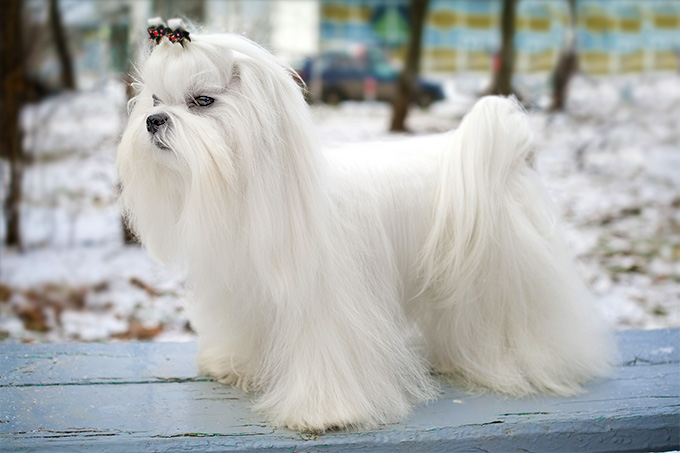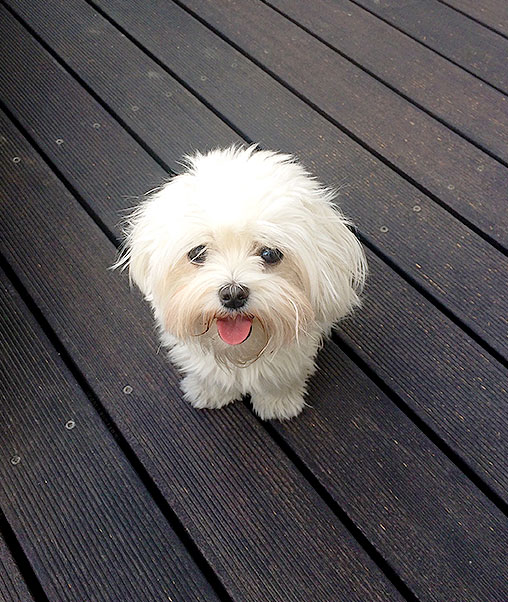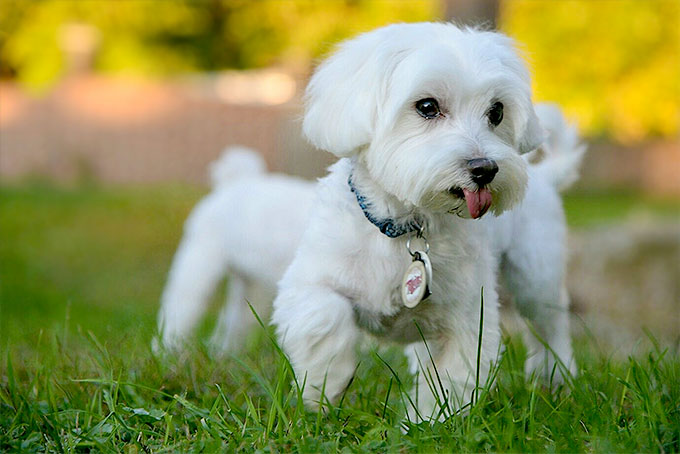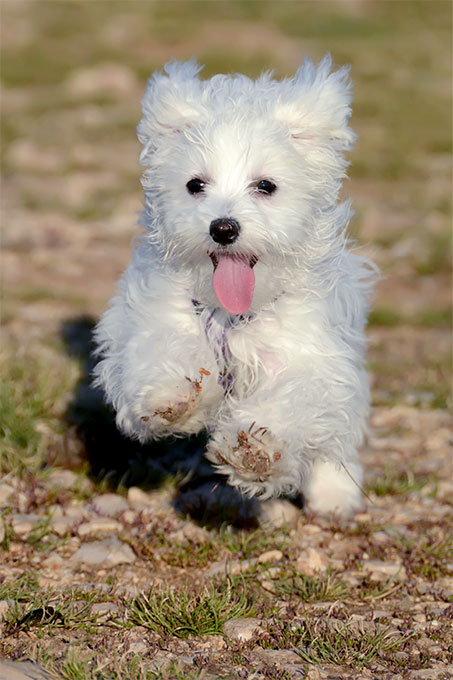Welcome to our blog on the Maltese dog breed! If you’re owner or considering getting a fluffy Maltese companion, you’ve come to the right place. In this guide, we’ll explore the ways to keep your Maltese looking magnificent and feeling their best through proper grooming and nutrition.
The Maltese breed is known for its grace and beauty, but their long, silky coats require extra care. Regular grooming is key to keeping their fur tangle-free and beautiful. Also, providing the right nutrition is essential for their overall health and happiness.
Whether you’re new to the world of Maltese dogs or looking to enhance your knowledge, we’ve got you covered! Let’s explore the world of Maltese grooming and nutrition, so you can ensure your furry friend stays healthy and stylish throughout their life.
Let’s get started!
Section 1: Grooming for the Maltese Dog Breed

Grooming your adorable Maltese is not just about keeping them looking fabulous, but also plays a vital role in their overall well-being. Let’s explore some practical grooming tips and the right products to keep your Maltese in top shape:
1. Coat Care:
The Maltese has a long, luxurious coat that requires regular care to prevent tangles and mats. Brush your furry friend’s coat at least 2-3 times a week to keep it silky and smooth. Use a slicker brush or a comb designed for long-haired dogs. Regular brushing also helps reduce shedding and keeps their coat healthy.
Practical Tip:
Keep a small brush handy and make brushing sessions a fun bonding time with your Maltese, rewarding them with dog treats or praise.
2. Bathing:
Maltese dogs are generally clean, but regular baths are necessary to keep their coat and skin healthy. Aim for bathing once every 4-6 weeks, or as needed if they get dirty. Use a mild dog shampoo suitable for their sensitive skin. Follow up with a dog conditioner to maintain their coat’s softness.
Practical Tip:
Use a non-slip mat in the bathtub to ensure your Maltese feels secure during bath time. Reward them with treats after bathing to create a positive association.
3. Eye and Tear Stain Cleaning:
Maltese dogs are prone to tear stains, which can be unsightly. To keep the area around their eyes clean, use a damp cloth or eye wipes specifically designed for dogs. Avoid using human facial wipes, as they may contain harmful ingredients.
Practical Tip:
Consider using a tear stain remover product such as Miracle care to gently and effectively remove tear stains.
4. Ear Cleaning:
Keeping your Maltese’s ears clean is essential to prevent infections. Use PetArmor Ear Rinse and a cotton ball to gently clean the ears. Avoid using cotton swabs, as they can push debris further into the ear canal.
Practical Tip:
Regularly check your Maltese’s ears for signs of redness, swelling, or unusual odor, which could indicate an ear infection.
5. Dental Care:
Dental hygiene is crucial for Maltese dogs, as small breeds are more prone to dental issues. Brush your pup’s teeth regularly using a dog-friendly toothbrush and toothpaste. Dental chews and toys designed to promote dental health can also help keep their teeth clean.
Practical Tip:
Provide dental treats or toys that encourage chewing, which can help reduce plaque and tartar buildup.
Section 2: Nutrition for the Maltese Dog Breed
Proper nutrition is the key to ensuring your Maltese dog leads a healthy and happy life. Let’s dive into their dietary requirements, feeding schedule, portion control, and the best treats for these adorable pups:
1. Dietary Requirements:
Maltese dogs have unique nutritional needs that vary based on their size, age, and activity level. As a small dog breed, they require a diet rich in essential nutrients to support their high metabolism and maintain their energy levels. Look for dog food that is specifically formulated for small breeds or all life stages. When choosing the right dog food, consider the following tips:
Protein:
Opt for dog food with high-quality protein sources like chicken, turkey, or fish to support their lean muscle mass.
Fats:
Look for healthy fats, such as omega-3 and omega-6 fatty acids, for maintaining a healthy coat and skin.
Carbohydrates:
Choose easily digestible carbohydrates like sweet potatoes or brown rice to provide a steady source of energy.
Product Suggestion:
AvoDerm Small Breed Formula with chicken, brown rice, and omega fatty acids.
2. Feeding Schedule:
Establishing a consistent feeding schedule is essential for Maltese dogs. Puppies have different feeding needs than adult dogs, so here’s a sample schedule:
Puppy Feeding Schedule:
- 8-12 weeks: 4 meals a day
- 3-6 months: 3 meals a day
- 6 months and older: 2 meals a day
Adult Feeding Schedule:
- 1 year and older: 2 meals a day
Practical Tip:
Stick to the same feeding times each day to create a routine for your Maltese, making mealtime more predictable and enjoyable.
3. Portion Control:
Portion control is vital to prevent overfeeding, which can lead to obesity, especially in small breeds like the Maltese. Follow the recommended portion sizes on the dog food packaging based on your dog’s weight and age. Adjust the portions if you notice weight gain or loss.
Practical Tip:
Use a measuring cup to accurately portion out your Maltese’s meals and avoid leaving food out all day.
- Treats and Snacks:
Treats are a wonderful way to reward and bond with your Maltese. However, it’s crucial to offer them in moderation to prevent excess calorie intake. Choose small-sized, low-calorie treats, and avoid those with artificial additives or excessive sugar. Alternatively, consider using pieces of their regular dog food as treats during training sessions.
Product Suggestion:
INABA Churu Bites, soft and Chewy Dog Treats with real chicken, no artificial colors, and small-sized bites.
Remember, every dog is unique, so consult with your veterinarian to determine the best diet plan for your individual Maltese, considering any specific health conditions or allergies. By providing a balanced diet and monitoring portion sizes, you’ll help your Maltese stay in tip-top shape for a long and joyful life together.
Section 3: Health and Special Considerations
As much as we adore our Maltese companions, it’s essential to be aware of common health issues that can affect them. Let’s explore these concerns and how proper grooming and nutrition can contribute to their overall well-being:
1. Common Health Issues:
Maltese dogs are generally hardy, but like all breeds, they may be prone to certain health problems. Some common health issues to watch out for include:
Dental Problems:
Regular dental care, such as brushing and providing dental treats, can help prevent dental issues like tooth decay and gum disease.
Patellar Luxation:
Keeping your Maltese at a healthy weight can reduce the risk of patellar luxation, a condition where the kneecap slips out of place.
Eye Conditions:
Proper grooming to keep the area around their eyes clean can help prevent eye infections and irritation.
Allergies:
Allergies to environmental factors or certain foods can affect Maltese dogs, leading to skin irritation and itching.
2. Allergies and Food Sensitivities:
Maltese dogs can be sensitive to certain allergens, both in their environment and their diet. Signs of allergies include excessive itching, redness, skin rashes, and ear infections. Here are some tips to identify and manage potential allergies:
Environmental Allergies:
Keep your home clean and free from dust and pollen. Regularly groom your Maltese to remove potential allergens from their coat.
Food Allergies:
If you suspect a food allergy, consult your veterinarian to perform an elimination diet to identify the specific allergen. Switch to a limited ingredient diet with novel protein sources.
Product Suggestion:
Nutro limited Ingredient Dog Food with lamb and sweet potato, designed for dogs with food sensitivities.
Hypoallergenic Treats:
Opt for hypoallergenic treats made with limited ingredients, free from common allergens like wheat, corn, and soy.
Product Suggestion:
C.E.T. VEGGIEDENT Flex Hypoallergenic Plant based Dog Treats perfect for sensitive tummies.
Practical Tip:
Keep a journal to track any changes in your Maltese’s diet and environment, making it easier to pinpoint the source of any potential allergies.
Being proactive in addressing health issues and providing your Maltese with a balanced diet and proper grooming can go a long way in promoting their well-being. Regular check-ups with your veterinarian will also help catch any health concerns early on. With your love and care, your Maltese companion can lead a healthy and happy life by your side.
In the End
In conclusion, keeping your Maltese dog happy and healthy is a journey filled with love, grooming, and nutritious meals. By understanding their specific needs, you can tailor their diet and grooming routine to suit their adorable personalities. From regular brushing to balanced meals, your Maltese will bloom in your caring hands.
Here’s to a lifetime of blissful moments with your Maltese sidekick—may your bond grow stronger with every wag and every lick. Happy grooming and happy tails to you and your beloved Maltese!



